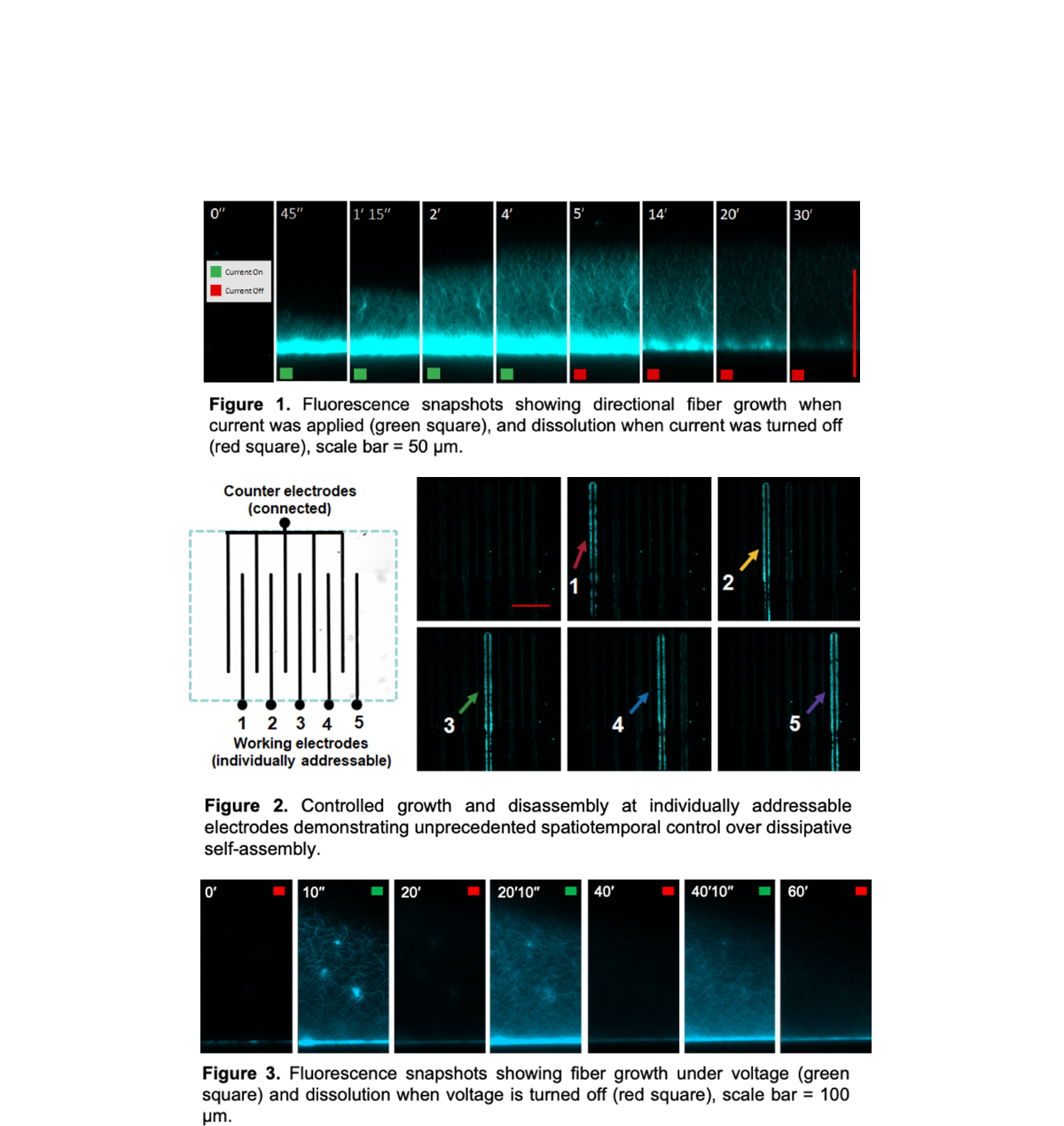 Dissipative Self-Assembly
Dissipative Self-Assembly
Fuel-driven self-assembly is ubiquitous in natural systems, leading to complex phenomena including cell motility, cell division, camouflage, and self-healing. Creating synthetic equivalents of these biological assemblies is challenging but offers the reward of active, dynamic materials.
Electrically-Fueled Assembly
Current synthetic dissipative self-assembly systems are fueled either by chemicals or light. Here, the UCI MRSEC team have developed the first electrically-fueled dissipative system that offers rapid kinetics, directionality, and unprecedented spatiotemporal control, closely mimicking systems found in nature. The electrochemically-fueled active, dynamic, and directional assembly is shown in Figure 1. Excitingly, the system demonstrates an unprecedented level of spatiotemporal control of self-assembly (Figure 2).
The team is now working on expanding this chemistry to a completely waste-free dissipative system. The transient behavior of dissipative self-assembly using dual electrocatalysts without generating any waste has been preliminarily demonstrated (Figure 3).